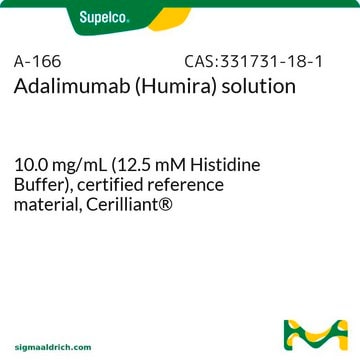Wichtige Dokumente
H108
Hemicholinium-3
solid, ≥95% (HPLC)
Synonym(e):
2,2′-(4,4′-Biphenylene)bis(2-hydroxy-4,4-dimethylmorpholinium bromide)
Größe auswählen
Größe auswählen
About This Item
Empfohlene Produkte
Assay
≥95% (HPLC)
Form
solid
Farbe
white
Löslichkeit
ethanol: 1.3 mg/mL
H2O: 10 mg/mL
SMILES String
[Br-].[Br-].C[N+]1(C)CCOC(O)(C1)c2ccc(cc2)-c3ccc(cc3)C4(O)C[N+](C)(C)CCO4
InChI
1S/C24H34N2O4.2BrH/c1-25(2)13-15-29-23(27,17-25)21-9-5-19(6-10-21)20-7-11-22(12-8-20)24(28)18-26(3,4)14-16-30-24;;/h5-12,27-28H,13-18H2,1-4H3;2*1H/q+2;;/p-2
InChIKey
OPYKHUMNFAMIBL-UHFFFAOYSA-L
Suchen Sie nach ähnlichen Produkten? Aufrufen Leitfaden zum Produktvergleich
Anwendung
Biochem./physiol. Wirkung
Leistungsmerkmale und Vorteile
Signalwort
Danger
Gefahreneinstufungen
Acute Tox. 3 Dermal - Acute Tox. 3 Inhalation - Acute Tox. 3 Oral - Eye Irrit. 2 - Skin Irrit. 2 - STOT SE 3
Zielorgane
Respiratory system
Lagerklassenschlüssel
6.1A - Combustible acute toxic Cat. 1 and 2 / very toxic hazardous materials
WGK
WGK 3
Flammpunkt (°F)
Not applicable
Flammpunkt (°C)
Not applicable
Persönliche Schutzausrüstung
Eyeshields, Faceshields, Gloves, type P2 (EN 143) respirator cartridges
Hier finden Sie alle aktuellen Versionen:
Besitzen Sie dieses Produkt bereits?
In der Dokumentenbibliothek finden Sie die Dokumentation zu den Produkten, die Sie kürzlich erworben haben.
Kunden haben sich ebenfalls angesehen
Active Filters
Unser Team von Wissenschaftlern verfügt über Erfahrung in allen Forschungsbereichen einschließlich Life Science, Materialwissenschaften, chemischer Synthese, Chromatographie, Analytik und vielen mehr..
Setzen Sie sich mit dem technischen Dienst in Verbindung.









